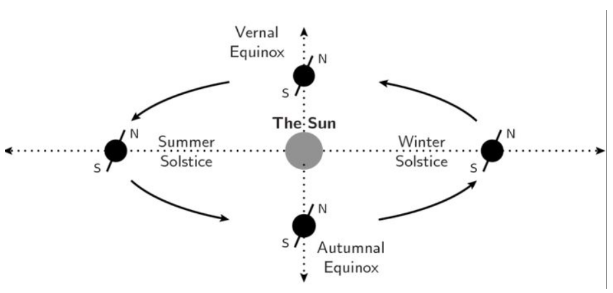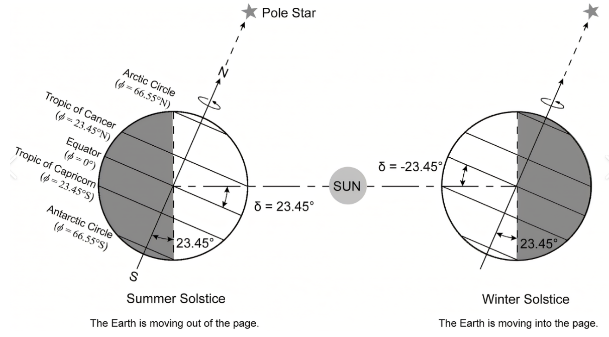The Equinox and Solstice are both seasonal, astronomical events. It happens in our solar system. This is because the earth revolves around the sun in an elliptical way. The equinox is where there are 2 days in the earthly year where the full day consists of equal lengths of day and night i.e. about 12 hours day and 12 hours night. Solstice, on the other hand, is twice a year, a full day in which the day is either too long or too low depending on the hemisphere.
Equinox
There are only two occasions each year when there is no pole facing the Sun, and the Sun lies directly above the Earth’s equator. These times are equinoxes. The March equinox takes place between March 19 and 21 (Vernal equinox). The September equinox took place between September 21 and 24 (Autumnal equinox).
In the Northern Hemisphere, the March equinox is also known as the spring or vernal equinox; the September equinox can be called the autumn or autumnal equinox. In the Southern Hemisphere, names are another way.
On the equinox day, in any place, the length of the day and night is almost equal.

Solstice
The farthest points from the equator where the Sun can appear directly above are called the tropics. Tropical areas are the latitude lines that orbit the Earth above and below the equator, about 23.4 degrees north and south. This angle is set by the axial angle of the ground.
There are two times each year when one of the poles of the Earth is very tilted towards the Sun, and the Sun sits above one of the tropics. These times are solstices.
The June solstice occurs sometime between June 20 and 22 (Summer solstice), when the Sun is higher than the Tropic of Cancer in the Northern Hemisphere. As a hard guide, Tropic of Cancer traverses Mexico, northern Africa, the Middle East, India and China.
The December solstice occurs between December 20 and 23 (Winter solstice), when the Sun is over the Tropic of Capricorn in the Southern Hemisphere. In short, the Tropic of Capricorn traverses South America, southern Africa, and Australia. With the date of the summer solstice, all areas on both sides experience their longest days and the shortest nights. The winter solstice produces short days and very long nights.

Difference Between Equinox and Solstice
EQUINOX | SOLSTICE |
An astronomical event in which the full day consists of a time equal to the time of night. | An astronomical event in which the full day has a very long or short daylight period is known as the Solstice. |
Equinox happens twice a year. | Solstice also occurs twice a year. |
20th march Vernal equinox and 22nd September autumn equinox, both days have the same time of day and the same time of night in the northern hemisphere. | The 21st June summer solstice has the longest noon day in the northern hemisphere. December 21 known as the winter solstice has the longest night in the northern hemisphere |
20th March and 22nd September autumnal equinox, both days have the same time of day and night in the southern hemisphere. | The 21st June summer solstice has the longest night time in the southern hemisphere. December 21 known as the winter solstice has the longest day in the southern hemisphere. |
The sun is at an angle of 90 degrees to the equator. | The sun is at an angle of 23.27 degrees on the equator. |
Conclusion
The Equinox and Solstice are both seasonal, astronomical events. It happens in our solar system. This is because the earth revolves around the sun in an elliptical way. The equinox is where there are days in the earthly year where the full day consists of equal lengths of day and night i.e. about 12 hours a day and 12 hours a night. Solstice, on the other hand, is twice a year, a full day in which the day is either too long or too low depending on the hemisphere.In this article we have discussed Equinox and Solstice, difference between equinox and solstice.
 Profile
Profile Settings
Settings Refer your friends
Refer your friends Sign out
Sign out




